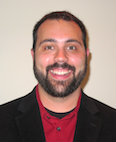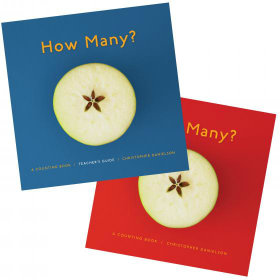How Many? A Counting Book for Everyone
How Many? A Counting Book
By Christopher Danielson
(Stenhouse, 2018 – Learn more)

Is it strange to have a middle school history teacher review a book about math? I requested to review How Many? for a slightly selfish reason. I am the father of two girls, six and two, and I love helping them discover new things and encouraging them to be curious about the world.

As a teacher and father I wanted to equip myself with skills to help my daughter use math everyday. I like outside the box thinking so I was immediately drawn to Christopher Danielson’s How Many?
What started as a quick way to assist my daughter turned into a beautiful adventure in learning about how children can grapple with the complexities of mathematical reasoning in relatively simple terms, using everyday objects.
Do not underestimate this book as “a quick read,” or “just for elementary school,” or “just another counting book.” How Many? is deeply layered, with so many opportunities for learning through critical thinking.
What’s in the book(s)
I have never taught math so this companion set with book and teacher’s guide proved extremely useful. Without it I may have overlooked what skills are needed to begin to dissect a question like how many?
Researcher Karen Fuson has described understanding numbers as having three components: quantity, number language, and numeration (Fuson et al. 1997). A simple distinction among these three is the following:
- Quantity is how many things there are.
- Number language is how we say how many things there are.
- Numeration is how we write how many things there are.
(page 11, Teacher’s Guide)
Students are often concerned with the “right” answer, and that search sometimes blinds them to the information they are analyzing. During the beginning of the year I do a series of lessons in my history class to show that sometimes there is no single “right” answer. People interpret what they see differently. These are some of my favorite lessons because I can watch students learning to analyze and dissect what they see to form opinions. They even begin to look beyond the top layer and consider tone and the words used to make judgments.
Danielson uses this same philosophy to shape his book.
“…it may take some time for [learners] to become comfortable living in the ambiguity of multiple ways of viewing a counting situation. But it is worth the time invested; an enriched and nuanced worldview is a noble aim of education.” (page 35, Teacher’s Guide)
It is certainly a noble aim and it is critical all teachers engage in this type of learning. When you flip to a page in the book with a picture of, say, half-avocados to begin your “how many” conversation, children start analyzing the picture. “How many what?” might be a typical first question, but as you start to prod they will begin deep mathematical thinking.
“Questioning assumptions requires a critical eye. I hope How Many? helps your students to be critical consumers of mathematical claims.” (page 42, Teacher’s Guide)
I can imagine this book being useful in all grades. In elementary school it will serve to allow students to discover math and math concepts. In middle and high school it will open a dialogue about how people perceive information to answer a pretty “basic” question like how many. I can say from personal experience that this book opened my eyes in terms of helping my children with math and for that I am truly grateful.
I leave you with this one last quote from Danielson.
“You may find yourselves less concerned with right answers to questions involving ‘how many?’ and more focused on finding creative and surprising answers.” (page 82, Teacher’s Guide)
Michael DiClemente is a sixth grade ancient civilizations teacher in Medford, MA. Michael also advises the Middle School Model UN Club and runs the eighth grade trip to New York City. Michael is a mentor and New Teacher Liaison in his district and enjoys working with new teachers. He is a graduate of the 2018 Teacher Leadership Institute cohort.

































